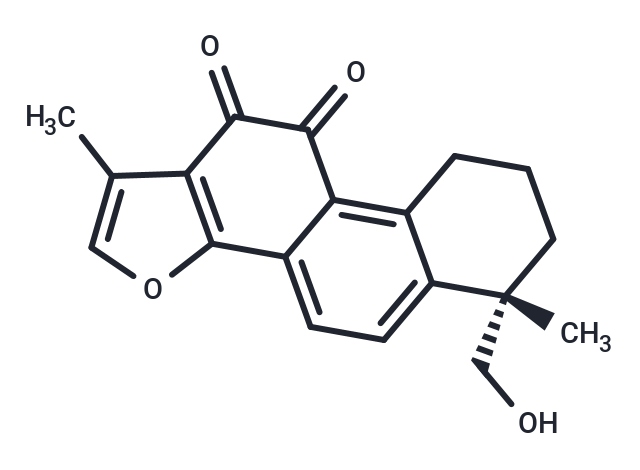Shopping Cart
Remove All Your shopping cart is currently empty
Your shopping cart is currently empty
Co-treatment with Tanshinone IIB (TSB) significantly inhibits the DNA laddering, cytotoxicity and apoptosis of rat cortical neurons induced by staurosporine in a concentration-dependent manner; TSB also suppresses the elevated Bax protein and decreased bcl-2 and caspase-3 proteins induced by staurosporine in rat cortical neurons; TSB is effective in reducing stroke-induced brain damage and may represent a novel drug candidate for further development.

| Pack Size | Price | USA Warehouse | Global Warehouse | Quantity |
|---|---|---|---|---|
| 5 mg | $971 | Inquiry | Inquiry |
| Description | Co-treatment with Tanshinone IIB (TSB) significantly inhibits the DNA laddering, cytotoxicity and apoptosis of rat cortical neurons induced by staurosporine in a concentration-dependent manner; TSB also suppresses the elevated Bax protein and decreased bcl-2 and caspase-3 proteins induced by staurosporine in rat cortical neurons; TSB is effective in reducing stroke-induced brain damage and may represent a novel drug candidate for further development. |
| In vitro | The uptake and efflux of Tanshinone IIB in rat primary microvascular endothelial cells (RBMVECs) were ATP-dependent and significantly altered in the presence of a P-glycoprotein (P-gp) or multidrug resistance associated protein (Mrp1/2) inhibitor. A polarized transport of Tanshinone IIB was found in RBMVEC monolayers with facilitated efflux from the abluminal to luminal side. Addition of a P-gp inhibitor (e.g. verapamil) in both abluminal and luminal sides attenuated the polarized transport. In an in situ rat brain perfusion model, Tanshinone IIB crossed the blood-brain barrier (BBB) and blood-cerebrospinal fluid barrier at a greater rate than that for sucrose, and the brain penetration was increased in the presence of a P-gp or Mrp1/2 inhibitor. The brain levels of Tanshinone IIB were only about 30% of that in the plasma and it could be increased to up to 72% of plasma levels when verapamil, quinidine, or probenecid was co-administered in rats. The entry of Tanshinone IIB to CNS increased by 67-97% in rats subjected to middle cerebral artery occlusion or treatment with the neurotoxin, quinolinic acid, compared to normal rats. Furthermore, The brain levels of Tanshinone IIB in mdr1a(-/-) and mrp1(-/-) mice were 28- to 2.6-fold higher than those in the wild-type mice[1] |
| Molecular Weight | 310.349 |
| Formula | C19H18O4 |
| Cas No. | 17397-93-2 |
| Relative Density. | 1.282 g/cm3 (Predicted) |
| Storage | Powder: -20°C for 3 years | In solvent: -80°C for 1 year | Shipping with blue ice/Shipping at ambient temperature. |
| Size | Quantity | Unit Price | Amount | Operation |
|---|

Copyright © 2015-2025 TargetMol Chemicals Inc. All Rights Reserved.